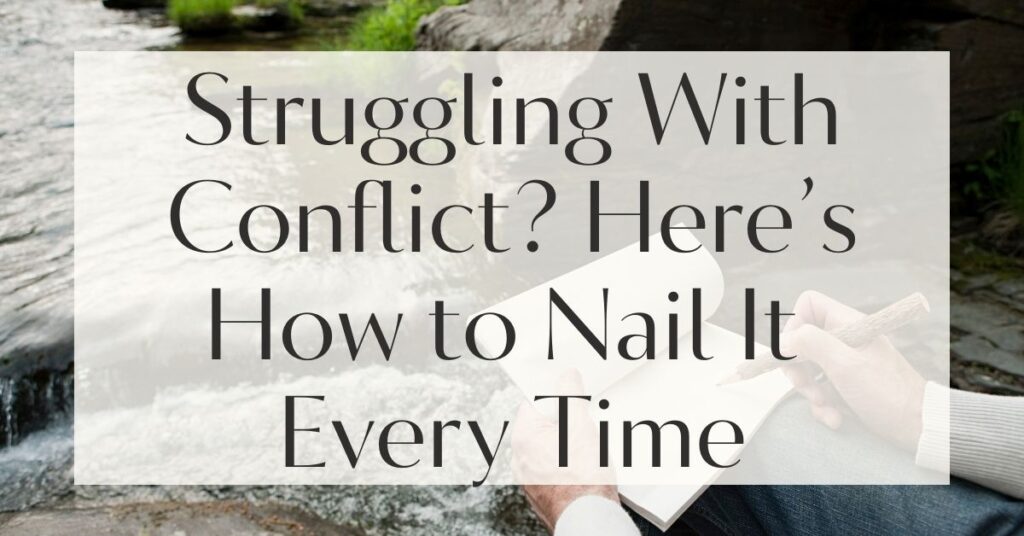In the theatre of life, conflict often plays an unexpected role, catching us off guard and challenging our peace. Whether in the workplace, at home, or within our social circles, understanding conflict resolution strategies is essential for maintaining harmony and building strong relationships.
This guide is designed to empower you with actionable steps and insights into effectively managing conflict. By embracing these techniques, you can transform disputes into opportunities for growth and collaboration.
Understanding Conflict and Its Impact
Before diving into solutions, it’s vital to grasp what conflict truly means and its potential effects on our lives. Conflict isn’t merely a clash of interests; it is an inevitable part of human interaction that can either be destructive or constructive, depending on how it is handled.
The emotional toll it takes can be significant, often leading to stress, anxiety, and strained relationships. However, mastering the art of conflict resolution can turn these challenges into stepping stones for personal and professional development.
What is Conflict?
Conflict arises when actions, goals, or ideas are perceived to be incompatible. It can stem from various sources, such as misunderstandings, differing values, or competition for resources.
Consider a workplace scenario where two colleagues vie for the same promotion. The tension between them may escalate into conflict if not addressed promptly. Recognizing the nature of conflict is the first step in navigating its complexities.
Conflicts can manifest in numerous forms, from minor disagreements to full arguments. Each situation demands a tailored approach, emphasizing the importance of being adaptable in your conflict management techniques. Identifying the underlying issues can pave the way for a resolution that satisfies all parties involved.
The Emotional Toll of Conflict
The emotional impact of conflict can be profound, affecting both mental health and interpersonal relationships. Unresolved conflict often breeds resentment, leading to a breakdown in communication and trust.
Imagine a family dispute where unresolved issues linger, causing a rift that widens over time. Addressing the emotional aspects is crucial for healing and moving forward.
Recognize the signs of emotional distress caused by conflict, such as increased irritability or withdrawal. Early intervention can prevent long-term damage to relationships and personal well-being.
If emotions become overwhelming, consider seeking support from a counsellor or mediator. Remember, acknowledging feelings is a strength, not a weakness.

The Importance of Conflict Resolution
Effective conflict resolution strategies are indispensable for fostering healthy relationships and creating a positive environment. You address immediate issues, build resilience, and improve communication skills by resolving conflicts constructively.
Effective conflict resolution can enhance teamwork and productivity in the workplace and strengthen bonds and deepen understanding in personal relationships.
Conflict resolution is not just about finding a quick fix; it’s about learning and growing through the process. It encourages empathy and understanding, allowing individuals to see situations differently. By embracing conflict as a natural part of life, you can unlock its potential to enrich your interactions and experiences.
Essential Conflict Resolution Strategies
To navigate the turbulent waters of conflict, one must equip themselves with the right tools and techniques.
From identifying the root cause to honing communication skills, these strategies are the compass guiding you toward resolution. Integrating these approaches into your daily interactions can transform conflict into a catalyst for positive change.
Feeling lost with your debut novel?
Fiverr Pro connects you with expert editors, designers, and marketers – everything you need to get your book ready for success!

Identifying the Root Cause of Conflict
The first step in resolving any conflict is to identify its root cause. This involves looking beyond the surface issues and understanding the deeper motivations and emotions. For instance, disagreements over project deadlines may stem from a lack of resources or unclear expectations.
By delving into the issue’s core, you can address it more effectively and prevent recurrence.
Engage in open dialogue to uncover the underlying concerns of all parties involved. This clarifies the problem and demonstrates a willingness to listen and understand.
Remember, the goal is to resolve the conflict, not to assign blame. By focusing on solutions rather than problems, you can achieve a more harmonious outcome.
Active Listening Techniques
Active listening is a vital conflict resolution component of effective communication. It involves giving the speaker your full attention, acknowledging their perspective, and responding thoughtfully. This technique fosters mutual respect and understanding, creating a safe space for honest dialogue.
Practice active listening by maintaining eye contact, nodding to show comprehension, and summarizing what you’ve heard. These gestures convey empathy and validate the speaker’s feelings.
Avoid interrupting or jumping to conclusions, as this can escalate tensions. You build trust and facilitate a more productive conversation by truly hearing others.

Effective Communication Skills
Communication is the bridge that connects conflicting parties, and honing your skills can significantly impact the resolution process. Clarity, assertiveness, and empathy are key elements of effective communication. Express your thoughts and feelings clearly while remaining respectful and open to feedback.
Use “I” statements to communicate your perspective without sounding accusatory. For example, say, “I feel overwhelmed when deadlines are tight,” instead of “You always rush me.” This approach reduces defensiveness and encourages constructive dialogue. Practice empathy by considering how your words might affect others and adjusting your tone accordingly.
Exploring Conflict Management Techniques
Once you’ve laid the groundwork with essential strategies, it’s time to explore specific conflict management techniques. These methods offer structured approaches to resolving disputes and fostering collaboration. Integrating these techniques into your toolkit can address conflicts with confidence and poise.
Collaborative Problem Solving
Collaborative problem-solving is a cooperative approach that emphasizes teamwork and shared goals. Instead of viewing conflict as a win-lose situation, this technique encourages all parties to work together toward a mutually beneficial solution. It’s akin to assembling a puzzle, where each piece represents a different perspective contributing to the whole picture.
Engage in brainstorming sessions to generate creative solutions and explore different possibilities. Encourage open communication and value each person’s input, regardless of their role or position. By fostering a collaborative atmosphere, you can transform conflict into an opportunity for innovation and growth.
Negotiation Skills for Conflict Resolution
Negotiation is an art that requires patience, tact, and a willingness to compromise. It’s about finding common ground and reaching an agreement that satisfies all parties involved.
Imagine a seesaw, where balance is achieved through give and take. Effective negotiation can turn adversaries into allies, paving the way for a lasting resolution.
Begin by identifying shared interests and areas of agreement. This establishes a foundation for constructive dialogue and reduces resistance. Be prepared to make concessions and remain flexible in your approach.
By focusing on the bigger picture, you can achieve a win-win outcome that strengthens relationships and fosters cooperation.
Mediation and Third-Party Involvement
When conflicts become particularly complex or emotionally charged, involving a neutral third party can be beneficial. Mediation provides an objective perspective and facilitates communication between conflicting parties. Think of a mediator as a bridge builder, connecting disparate viewpoints and guiding the conversation toward resolution.
Choose an impartial and experienced mediator. Their role is to facilitate dialogue, not to impose solutions. Encourage open and honest communication during mediation sessions, ensuring all parties can express their views. By fostering a respectful and collaborative environment, mediation can lead to sustainable resolutions.
Practical Steps to Navigate Conflict
Equipped with strategies and techniques, it’s time to put theory into practice. Navigating conflict requires preparation, implementation, and reflection.
By following these practical steps, you can confidently address disputes and foster positive outcomes. Think of it as embarking on a journey, where each step brings you closer to resolution.

Preparing for the Conversation
Preparation is key to a successful conflict resolution conversation. Before engaging, take time to gather your thoughts and clarify your objectives.
Consider the desired outcome and anticipate potential challenges. Like a chess player planning their next move, strategic preparation sets the stage for effective dialogue.
Approach the conversation with an open mind and a willingness to listen. Choose a neutral setting where all parties feel comfortable and respected.
Set clear boundaries and establish ground rules to ensure a productive discussion. By preparing thoughtfully, you create an environment conducive to resolution.
Implementing Solutions and Following Up
Once an agreement is reached, it’s essential to implement the solutions and follow up to ensure their effectiveness. This involves putting plans into action and monitoring progress. Consider it as tending to a garden, where consistent care and attention yield fruitful results.
Assign responsibilities and establish a timeline for implementation. Regularly check in with all parties to assess progress and address any concerns. Be open to adjustments if necessary, as flexibility is key to long-term success. Following up reinforces commitment and accountability, strengthening the resolution process.
Google Docs is for notes. Scrivener is for novels. Upgrade your writing game and try it for free today!

Reflecting on the Experience
Reflection is a valuable tool for growth and learning. After navigating a conflict, evaluate the experience and consider what worked well and could be improved. This introspection allows you to refine your approach and enhance your conflict resolution skills for future encounters.
Reflect on your emotions and reactions during the process and the dynamics of the conversation. Identify any patterns or triggers that may have influenced the outcome. Gaining insight into your conflict management techniques can help you develop greater self-awareness and adaptability.
Building Long-Term Conflict Management Skills
Mastering conflict resolution is a continuous journey, requiring dedication and practice. By cultivating essential skills and fostering a growth mindset, you can enhance your ability to manage conflict effectively. Think of it as building a muscle, where consistent effort leads to strength and resilience.

Cultivating Empathy and Understanding
Empathy is the cornerstone of meaningful connections and effective conflict resolution. You gain insight into their perspectives and emotions by putting yourself in others’ shoes. This understanding fosters compassion and reduces defensiveness, paving the way for constructive dialogue.
Practice active empathy by asking open-ended questions and genuinely listening to responses. Reflect on your own experiences to relate to others’ feelings and challenges.
Recognize that empathy is a skill that can be developed through practice and intention. By prioritizing empathy, you create a foundation for trust and collaboration.

Developing Resilience in Conflict Situations
Resilience is the ability to bounce back from adversity and adapt to change. In conflict situations, resilience empowers you to remain calm and composed, even facing challenges.
Imagine a bamboo tree bending with the wind, yet standing tall and unbroken. Developing resilience enhances your capacity to navigate conflict with grace and confidence.
Strengthen resilience by cultivating a positive mindset and focusing on solutions rather than problems. Embrace setbacks as opportunities for growth and learning.
Surround yourself with supportive individuals who encourage and uplift you. By building resilience, you equip yourself to handle conflict with poise and determination.
Continuous Improvement in Communication
Effective communication is a lifelong skill that requires ongoing refinement and practice. Continually improving your communication abilities enhances your capacity to resolve conflicts and build meaningful relationships. Think of it as polishing a gemstone, where each facet contributes to its brilliance.
Seek feedback from others to identify areas for improvement and growth. Engage in active learning through workshops, courses, or reading materials.
Practice communication techniques regularly, both in conflict situations and everyday interactions. Committing to continuous improvement elevates your communication skills and enriches your relationships.
No marketing platform? No social following? No problem!
Publisher Rocket helps you market your debut novel like a pro.
It’s a gamechanger for debut authors – try it today!


Embracing Conflict as a Growth Opportunity
Rather than fearing conflict, embrace it as a catalyst for growth and transformation. By shifting your perspective, you can harness the power of conflict to drive positive change and foster collaboration. Conflict offers renewal and reinvention opportunities like a phoenix rising from the ashes.
Transforming Conflict into Collaboration
Transforming conflict into collaboration requires a shift in mindset and approach. You can turn adversaries into allies by focusing on shared goals and mutual benefits.
Imagine a symphony orchestra, where diverse instruments combine to create harmonious music. Collaboration transforms discord into unity, enhancing the potential for success.
Encourage open dialogue and value diverse perspectives, as each viewpoint contributes to a richer understanding of the issue. Foster a culture of inclusivity and respect, where differences are celebrated and leveraged for innovation.
By transforming conflict into collaboration, you unlock the potential for collective achievement and growth.
Learning from Conflict Experiences
Each conflict experience offers valuable lessons and insights. By reflecting on past encounters, you can identify patterns, strengths, and areas for improvement.
This learning process enhances your conflict resolution skills and prepares you for future challenges. Think of it as a tapestry; each thread represents a unique experience contributing to the overall design.
Document your reflections and insights to track your progress and growth over time. Share your learnings with others to foster a culture of continuous improvement and mutual support.
Embrace conflict as a teacher, guiding you toward greater understanding and mastery. By learning from conflict experiences, you empower yourself to navigate future challenges with confidence and wisdom.








